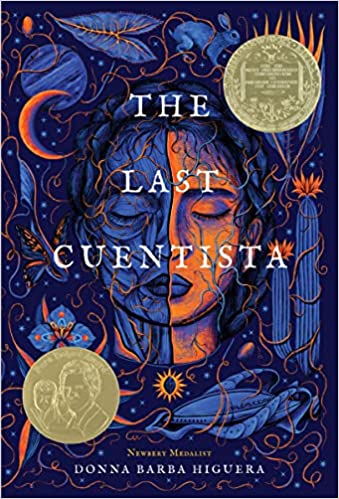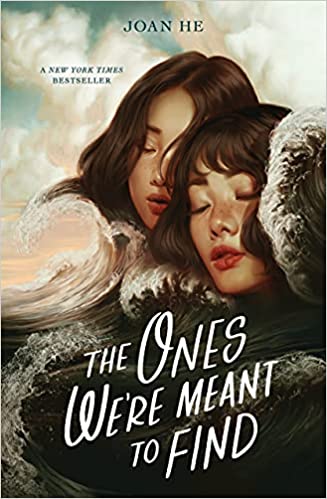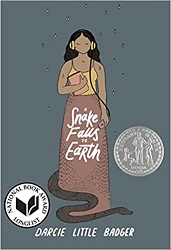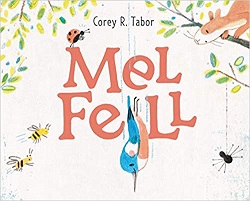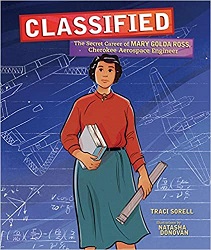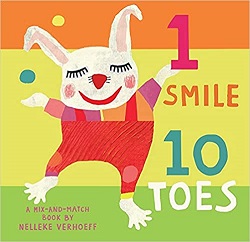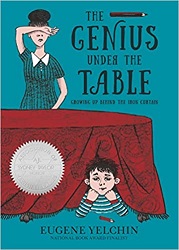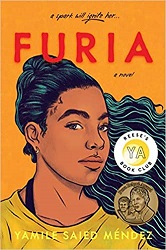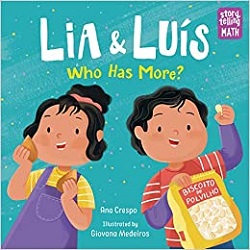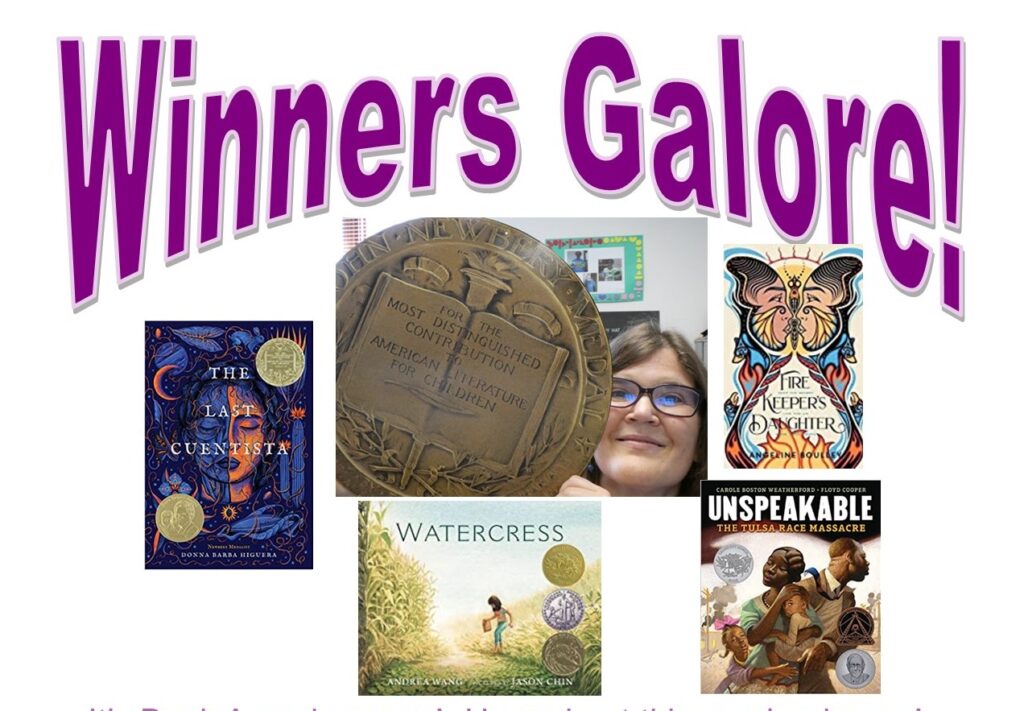
It’s Book Award Season! I’m doing a program to highlight some of my favorite books from 2021 that have been honored with awards this year, as well as highlighting the many awards out there. This post will give links to the award lists so you can find even more great books, along with featuring the books I plan to highlight. Books I’ve reviewed will have links to the review.
This year, I got to be part of three groups that selected outstanding books:
Committee to select the Mathical Book Prize, “an annual award for fiction and nonfiction books that inspire children of all ages to see math in the world around them.”
Round 2 Panel to select one winner for the Cybils Award (Children and Young Adult Bloggers’ Literary Awards) in Young Adult Speculative Fiction from seven Finalists. Something great about the Cybils Awards are the many categories and the lists of Finalists — if a kid is asked to read an award-winning book, they can certainly find something they like among the Cybils Finalists. There’s somethiing for everyone.
Capitol Choices. This is a DC-area group of children’s literature librarians and other professionals who meet monthly to choose 100 of the best children’s and young adult books each year.
I’m going to talk about books from these committees as well as other favorites that were honored with the many ALA Awards. From the “Youth Media Awards” page, you can find a brief description of each award and links to the pages with current and past winners. Here’s the press release for all this year’s winners.
On my blog every year, I also post a list of Sonderbooks Stand-outs, my personal favorite books read that year. This year it just so happened that three of my #1 Sonderbooks Stand-outs were honored with multiple ALA awards. That didn’t even happen the year I was on the Newbery committee!
For this award tasting, I’m going to mention favorite books and tell the awards and honors they’ve won. I’m going to start with books for the youngest children and move to older children and teens. I am going to try to cover lots of different awards along the way, and I’ll tell about the awards as they come up.
For Youngest Readers
2022 Mathical Winner, PreK:
1 Smile, 10 Toes, by Nelleke Verhoeff
2021 Cybils Finalist, Board Books:
2022 Mathical Honor Book, PreK:
Circle Under Berry, by Carter Higgins
For Preschoolers
The Randolph Caldecott Medal is given to “the illustrator of the most distinguished American picture book for children” that year. This is given for the art.
2022 Caldecott Honor Book:
Mel Fell, by Corey R. Tabor
2022 Caldecott Honor Book:
Have You Ever Seen a Flower?, by Shawn Harris
2022 Caldecott Honor Book:
Wonder Walkers, by Micha Archer
The Schneider Family Book Awards honor books “that embody an artistic expression of the disability experience for child and adolescent audiences.”
2022 Schneider Family Award Winner, Young Children:
My City Speaks, by Darren Lebeuf, illustrated by Ashley Barron
The Coretta Scott King Book Awards go to “outstanding African American authors and illustrators of books for children and young adults that demonstrate an appreciation of African American culture and universal human values.”
2022 Coretta Scott King Honor for Illustration:
We Wait for the Sun, by Dovey Johnson Roundtree and Katie McCabe, pictures by Raissa Figueroa
For Early Elementary School
The John Newbery Medal is given to “the author of the most distinguished contribution to American literature for children.” This is given for the text.
The Asian/Pacific American Awards for Literature “celebrate Asian/Pacific American culture and heritage,” given for literary and artistic merit.
The Boston Globe-Horn Book Awards are given to outstanding children’s and young adult books based on a calendar that goes from June to May.
2022 Caldecott Medal Winner:
2022 Newbery Honor Book:
2022 Asian/Pacific American Award for Literature Winner, Picture Books:
2021 Boston Globe-Horn Book Award Honor Book, Picture Books:
2021 Cybils Winner, Fiction Picture Books:
2021 #1 Sonderbooks Stand-out, Picture Books:
Watercress, by Andrea Wang, illustrated by Jason Chen
The Sydney Taylor Book Awards “recognize titles for children and teens that exemplify high literary standards while authentically portraying the Jewish experience.”
2022 Sidney Taylor Award Gold Medal, Picture Books:
2021 #2 Sonderbooks Stand-out, Picture Books:
The Passover Guest, by Susan Kusel, illustrated by Sean Rubin
Fun fact: Susan Kusel is a local librarian, and a past chair of the Sydney Taylor committee!
2022 Mathical Book Prize Winner, Grades K-2:
Uma Wimple Charts Her House, by Reif Larsen and Ben Gibson
The Theodor Seuss Geisel Award is given to the “most distinguished American book for beginning readers.”
2022 Geisel Award Winner:
2021 Cybils Finalist, Easy Readers:
Fox at Night, by Corey R. Tabor
2022 Geisel Honor Book:
Beak & Ally: Unlikely Friends, by Norm Feuti
The American Indian Youth Literature Awards are given every two years for the best writing and illustrations that “present Native American and Indigenous North American peoples in the fullness of their humanity in present, past and future contexts.”
2022 American Indian Youth Literature Award Honor Book, Middle Grades:
JoJo Makoons, The Used-to-Be Best Friend, by Dawn Quigley, illustrated by Tara Audibert
2022 Schneider Family Award Honor Book, Middle Grades:
Stuntboy, Volume 1, In the Meantime, by Jason Reynolds, drawings by Raul the Third
For Upper Elementary
The Robert F. Sibert Informational Book Medal is given to the most distinguished American informational book.
2022 Coretta Scott King Author Winner:
2022 Coretta Scott King Illustrator Winner:
2022 Caldecott Honor Book:
2022 Sibert Honor Book:
2021 Boston Globe-Horn Book Award Honor Book, Nonfiction:
2021 Cybils Finalist, Middle Grade Nonfiction:
2021 Sonderbooks Stand-out, #1 Children’s Nonfiction:
Unspeakable: The Tulsa Race Massacre, by Carole Boston Weatherford, illustrated by Floyd Cooper
2022 Mathical Winner, Grades 3-5:
2021 Sonderbooks Stand-out, #10 Children’s Nonfiction:
Maryam’s Magic: The Story of Mathematician Maryam Mirzakhani, by Megan Reid, illustrations by Aaliya Jaleel
2022 Mathical Honor Book, Grades 3-5:
2022 American Indian Youth Literature Award Honor Book, Picture Books:
2021 Cybils Finalist, Middle Grade Nonfiction:
Classified: The Secret Career of Mary Golda Ross, Cherokee Aerospace Engineer, by Traci Sorell, illustrations by Natasha Donovan
2022 Mathical Honor Book, Grades 3-5:
Molly and the Mathematical Mysteries, by Eugenia Cheng
2022 Sibert Honor Book:
2021 Sonderbooks Stand-out, #5 Children’s Nonfiction:
The Great Stink: How Joseph Bazalgette Solved London’s Poop Pollution Problem, by Colleen Paeff, illustrated by Nancy Carpenter
2022 Sidney Taylor Silver Medal, Middle Grades:
The Genius Under the Table, by Eugene Yelchin
The Mildred L. Batchelder Award is given to the most outstanding book originally published in another language in another country and translated into English.
2022 Batchelder Honor Book:
The Sea-Ringed World: Sacred Stories of the Americas, written by María García Esperón, illustrated by Amanda Mijangos and translated by David Bowles
For Middle School
The Pura Belpré Award is given to “a Latino/Latina writer and illustrator whose work best portrays, affirms, and celebrates the Latino cultural experience in an outstanding work of literature for children and youth”
2022 Newbery Medal Winner:
2022 Pura Belpré Award Author Winner:
2021 Cybils Finalist, Elementary/Middle Grade Speculative Fiction:
The Last Cuentista, by Donna Barba Higuera
The Stonewall Book Award – Mike Morgan & Larry Romans Children’s & Young Adult Literature Award is given to “English-language works of exceptional merit for children or teens relating to the gay, lesbian, bisexual and transgender experience.”
The National Book Award for Young People’s Literature is given to an American author, on a publishing year that runs from December to November.
2022 Newbery Honor Book:
2022 Stonewall Award Winner, Children’s Literature:
2021 National Book Award Finalist:
2021 Cybils Finalist, Elementary/Middle Grade Speculative Fiction:
Too Bright to See, by Kyle Lukoff
The Michael L. Printz Award is given to “a book that exemplifies literary excellence in young adult literature.”
2022 Printz Honor Book:
2021 Cybils Finalist, Poetry:
2021 Sonderbooks Stand-out, #5 Children’s Fiction:
Starfish, by Lisa Fipps
The Walter Dean Myers Award for Outstanding Children’s Literature is sponsored by We Need Diverse Books and celebrates diversity in children’s literature.
2022 Newbery Honor Book:
2022 Walter Award Winner, Younger Readers Category:
2021 Cybils Finalist, Poetry:
Red, White and Whole, by Rajani LaRocca
2022 Mathical Book Prize Winner, Grades 6-8:
AfterMath, by Emily Barth Isler
2022 Mathical Honor Book, Grades 6-8:
2021 Sonderbooks Stand-out, #8 Children’s Fiction:
In the Red, by Christopher Swiedler
2022 Sidney Taylor Gold Medal, Middle Grades:
How to Find What You’re Not Looking For, by Veera Hiranandani
2022 American Indian Youth Literature Honor Book:
2020 Cybils Young Adult Speculative Fiction Finalist:
2020 Sonderbooks Stand-out, #5 Teen Speculative Fiction:
Elatsoe, by Darcie Little Badger
2022 Newbery Honor Book:
2021 National Book Award Longlist:
A Snake Falls to Earth, by Darcie Little Badger
The YALSA Award for Excellence in Nonfiction for Young Adults is given to “the best nonfiction book for young adults.”
2022 YALSA Excellence in Nonfiction Finalist:
2022 Capitol Choices selection:
In the Shadow of the Fallen Towers, by Don L. Brown
2022 Mathical Book Prize Honor Book, Grades 6-8:
It’s a Numbers Game: Baseball
For High School
The William C. Morris YA Debut Award “honors a debut book published by a first-time author writing for teens.”
2022 Printz Medal Winner:
2022 Morris Award Winner:
2022 American Indian Youth Literature Honor Book:
2022 Walter Award Winner, Teen Category:
2021 Cybils Finalist, Young Adult Fiction:
2021 Sonderbooks Stand-out, #1 Teen Fiction:
Firekeeper’s Daughter, by Angeline Boulley
2022 Cybils Young Adult Fiction Winner:
2021 Sonderbooks Stand-out, #2 Teen Fiction:
The Girls I’ve Been, by Tess Sharpe
2022 Cybils Young Adult Speculative Fiction Winner:
Vespertine, by Margaret Rogerson
2021 Cybils Young Adult Speculative Fiction Finalist:
The Mirror Season, by Anna-Marie McLemore
2022 Printz Honor Book:
2021 Cybils Young Adult Fiction Finalist:
Concrete Rose, by Angie Thomas
2022 Sidney Taylor Gold Medal, Young Adults
2021 Cybils Young Adult Speculative Fiction Finalist:
The City Beautiful, by Aden Polydoros
2021 Cybils Young Adult Speculative Fiction Finalist:
Bad Witch Burning, by Jessica Lewis
2022 Printz Honor Book:
2022 Coretta Scott King Author Honor Book:
2021 National Book Award Finalist:
Revolution in Our Time: The Black Panther Party’s Promise to the People, by Kekla Magoon
2022 YALSA Excellence in Nonfiction Honor Book:
The Woman All Spies Fear: Codebreaker Elizebeth Smith Friedman and Her Hidden Life, by Amy Butler Greenfield
